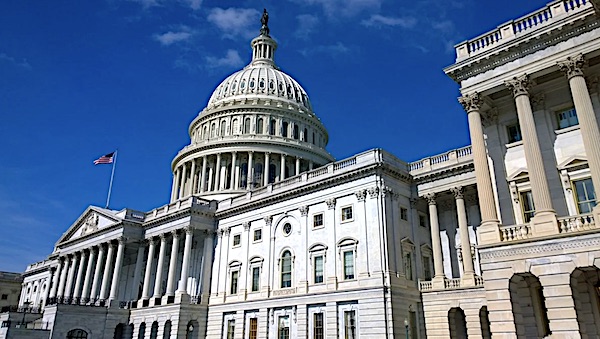
It looks like Congress may end up with a new member or two because of last week’s violence, in which protesters broke into the U.S. Capitol and vandalized it.
The new situation has developed because, according to a report from Politico, Rep. Mikie Sherrill, D-N.J., has accused colleagues in Congress of escorting people through the Capitol on January 5 for “reconnaissance” before the next day’s riot.
It charges criminal behavior on the part of other members of Congress, according to a video statement she posted online.
She said, in the video, “I also intend to see that those members of Congress who abetted him — those members of Congress who had groups coming through the capitol that I saw on Jan. 5 for reconnaissance for the next day — those members of Congress who incited the violent crowd, those members of Congress that attempted to help our president undermine our democracy, I’m going see that they’re held accountable.”
She declined, however, to identify the legislators. Nor would she explain how she determined those activities were “reconnaissance.”
She told Politico she gave her information to authorities.
The claim comes as lawmakers still are hunting for answers about the planning and coordination behind the Jan. 6 riot that followed a Trump rally nearby.
Politico reported federal investigators say they’re pouring enormous resources into unearthing details of a potential “seditious conspiracy.”
George Washington University law professor and commentator Jonathan Turley, who has testified in multiple presidential impeachment hearings over the years, said the claims by Sherrill are “an unambiguous allegation of criminal conduct” leveled against members of Congress.
If her charges are true, he said, those other members “could be criminally charged and expelled from the House.”
But, he noted, if her charges are rhetorical, or end up unsubstantiated, “she could (and should) face a resolution of censure.”
Turley explained, “Once she names a member, she could also be the subject of a defamation action. This was a statement made off of the floor and not protected under the Speech and Debate Clause.”
He continued, “Censure or reprimand is not the only possible response if this allegation is found to be without basis. The standard for defamation for public figures and officials in the United States is the product of a decision decades ago in New York Times v. Sullivan. The Supreme Court ruled that tort law could not be used to overcome First Amendment protections for free speech or the free press. The Court sought to create ‘breathing space’ for the media by articulating that standard that now applies to both public officials and public figures. In order to prevail, they must show actual knowledge or reckless disregard of the alleged falsity. Obviously, truth remains a defense. Under Gertz v. Robert Welch, Inc., 418 U.S. 323, 352 (1974) and its progeny of cases, the Supreme Court has held that public figure status applies when someone ‘thrust[s] himself into the vortex of [the] public issue [and] engage[s] the public’s attention in an attempt to influence its outcome.'”
He said the question is whether Sherrill can substantiate her claims with names, and what the evidence shows.
“This is clearly something that the House must investigate. Either Sherrill has evidence of a criminal conspiracy or has made an outrageous (and defamatory) allegation against her colleagues. Either possibility is unsettling,” he explained.
Via WND
